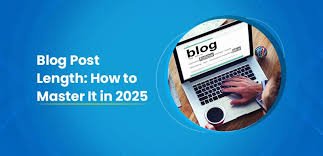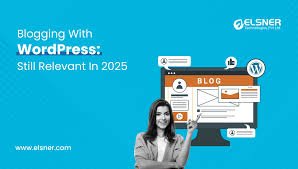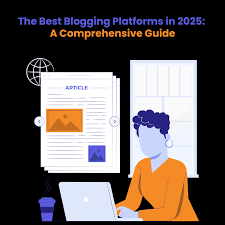Starting a blog in 2025 is a powerful way to express your ideas, build a personal brand, or even grow a business. However, it’s easy to get lost in the details, especially for beginners. From brainstorming ideas to building an audience, blogging can be a challenging but rewarding journey.
If you want to make an impact with your blog and grow a loyal following, mastering the basics is essential. This guide will walk you through the foundational steps to take your blog from just an idea to a fully realized platform that attracts and engages readers.
Step 1: Start with a Strong Idea
Every successful blog begins with a strong idea. While you might already have a general topic in mind, honing that idea is key. Your blog’s success depends on finding a niche that excites you and has potential for growth. The best niche is one that combines your passions, knowledge, and what people are searching for.
Here’s how to refine your blogging idea:
- Passion & Expertise: Your blog should reflect topics you care deeply about. Writing about something you’re passionate about will not only keep you motivated but also make your content more authentic.
- Market Research: Before finalizing your idea, do some research to see if there’s an existing audience for it. Tools like Google Trends, Answer the Public, and Ubersuggest can help identify whether people are searching for content in your niche.
- Narrow Your Focus: Sometimes, a broad topic like “health” can be overwhelming. Instead, narrow it down to something like “mental health for young adults” or “healthy eating on a budget.” This focused approach will help you stand out and appeal to a specific audience.
By starting with a clear and focused idea, you’ll be able to create valuable content that resonates with your audience from the start.

Step 2: Choose the Right Blogging Platform
Once you’ve chosen your blog’s niche, the next step is selecting a platform to host your content. There are a variety of blogging platforms, each with different benefits depending on your goals.
Here are three popular platforms to consider:
- WordPress.org: WordPress is the most widely used platform among bloggers. It’s flexible, highly customizable, and offers a large library of plugins to help you manage and grow your blog. The downside is that you’ll need to purchase hosting and a domain name, but the trade-off is complete control over your blog.
- Wix: Wix is perfect for beginners who want an easy-to-use drag-and-drop website builder. It’s quick to set up and doesn’t require any technical skills. However, it’s less customizable compared to WordPress.
- Squarespace: Squarespace is another all-in-one platform that offers sleek templates and a user-friendly interface. It’s great for those who prioritize design and ease of use, but may lack some of the advanced features of WordPress.
For long-term scalability, WordPress.org is the most recommended choice. It’s the most flexible and allows for easy customization as your blog grows.
Step 3: Set Up Your Blog
Once you’ve chosen your blogging platform, it’s time to get your blog set up. Here’s a quick overview of the steps to launch your blog:
- Pick a Domain Name: Choose a unique, memorable domain name that reflects your niche. This will be your blog’s web address (e.g., www.yourblogname.com). Keep it short, easy to spell, and related to your blog’s theme.
- Get Hosting: If you’re using WordPress, you’ll need a hosting provider. Popular options include Bluehost, SiteGround, and WP Engine. These providers often offer affordable plans and easy WordPress installation.
- Install WordPress (If Applicable): For WordPress users, the installation process is usually simple with one-click installers available through your hosting provider.
- Select a Theme: Choose a WordPress theme (or a template in Wix or Squarespace) that aligns with your brand and blog’s goals. Many themes are free, but premium themes provide more customization options and better support.
- Customize Your Blog: Personalize your blog’s design with a unique logo, a well-structured homepage, and pages like an About or Contact page. Make sure your blog’s layout is clean, intuitive, and mobile-friendly.

Step 4: Create Valuable Content
Now that your blog is set up, it’s time to focus on creating content. To attract and retain readers, you must consistently provide value. High-quality content is key to growing your audience.
Here are some content tips for success:
- Solve Problems: Create posts that answer questions or solve problems for your target audience. Your content should add value, whether it’s providing how-to guides, offering expert tips, or giving advice.
- Engage Readers with Compelling Headlines: Craft headlines that grab attention and make people want to click. Focus on clarity, urgency, and benefits.
- Write with Readability in Mind: Use short paragraphs, bullet points, and subheadings to make your posts easy to read and skim. This improves the user experience and keeps people on your site longer.
- Use Visuals: Break up the text with high-quality images, videos, or infographics. Visuals make your content more engaging and can help explain complex topics.
- Be Consistent: Consistency is key when building an audience. Set a schedule that works for you—whether it’s once a week, bi-weekly, or monthly—and stick to it. Regularly updated content helps boost your SEO rankings as well.
Step 5: Optimize for SEO
To ensure your blog gets found by search engines, you’ll need to implement search engine optimization (SEO) techniques. SEO helps your content rank higher on search engine results pages (SERPs), leading to increased traffic and exposure.
Here are some basic SEO tips for beginners:
- Keyword Research: Use tools like Ubersuggest or Ahrefs to find the best keywords for your niche. Once you have your target keywords, naturally incorporate them into your content, titles, and meta descriptions.
- Optimize Your Posts: Use plugins like Yoast SEO (for WordPress) to optimize each post for keywords, internal linking, and readability.
- Speed Matters: A slow-loading blog can drive visitors away. Optimize your site speed by compressing images, using a reliable hosting provider, and choosing a lightweight theme.
- Link Building: Building backlinks is a powerful SEO strategy. Consider guest posting on other blogs, joining online communities, and networking with other bloggers in your niche.
With SEO, you can increase your blog’s visibility and attract organic traffic over time.
Step 6: Promote Your Blog
Creating great content is only part of the equation. To build an audience, you need to actively promote your blog. Here’s how:
- Social Media: Share your blog posts on platforms like Instagram, Facebook, Twitter, and Pinterest. Create visually appealing snippets that encourage people to click and read.
- Email Marketing: Start building an email list from day one. Offer something of value—such as a free eBook or guide—to incentivize visitors to subscribe. Email marketing allows you to connect with your audience directly.
- Network with Other Bloggers: Engage with other bloggers in your niche. Leave thoughtful comments, collaborate on guest posts, or join blogging communities to expand your reach.
- Join Relevant Groups and Forums: Participate in Facebook groups, Reddit threads, or LinkedIn communities related to your niche. These platforms are great for networking and sharing your content with an interested audience.

Step 7: Monetize Your Blog
Once you’ve built a solid audience, you can start monetizing your blog. Here are a few ways to make money from your blog:
- Affiliate Marketing: Promote products or services related to your niche, and earn a commission for each sale made through your affiliate links.
- Sponsored Posts: Brands may approach you to write posts about their products in exchange for payment.
- Sell Your Own Products or Services: You can create and sell eBooks, courses, or digital products or offer services like coaching or consulting.
Conclusion
Blogging in 2025 can be incredibly rewarding if you approach it with a clear plan. From finding your niche to mastering SEO and promoting your content, every step of the blogging process is important for success. With consistency, dedication, and the right strategies in place, you can turn your blog from an idea into a powerful tool that impacts and grows your audience.
Related Tags:
- Blogging Basics
- How to Start a Blog
- Blogging Tips for Beginners
- SEO for Blogs
- Content Marketing Tips
- Growing Your Blog Audience
- Monetize Your Blog
- WordPress Tips
- Social Media for Bloggers
- Blogging for Success













